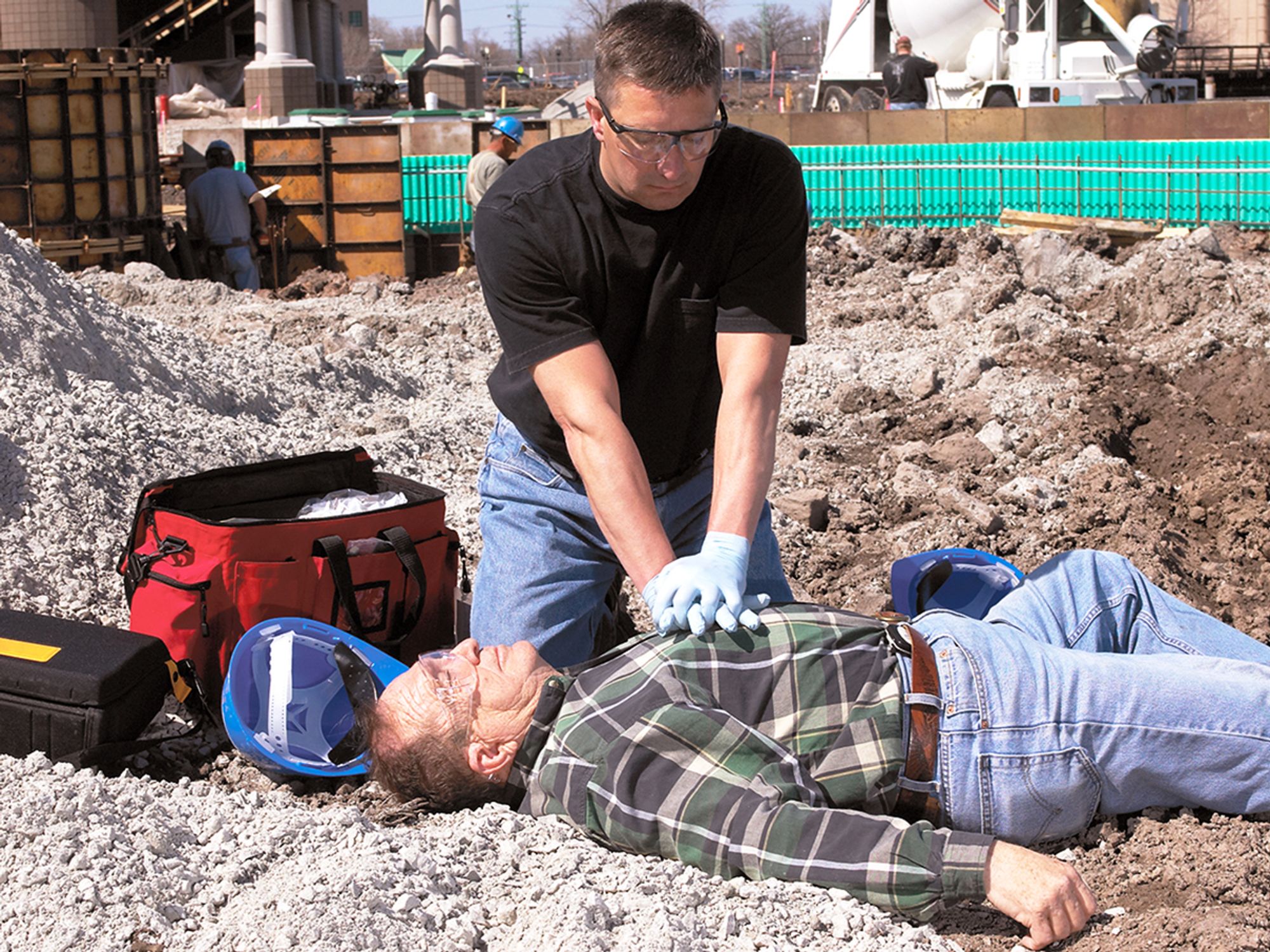First aid and medical requirements (Construction)

The construction regulation for medical services and first aid at 1926.50(b), says that provisions must be made prior to commencement of the project for prompt medical attention in case of serious injury. The phrase “reasonably accessible” in 1926.50(c) emphasizes the desirability of prompt assistance when an injury or illness occurs. If you’ve been in the safety field long you know that this has been interpreted to mean anything from three to fifteen minutes.
The following information from an OSHA Letter of Interpretation dated January 16, 2007, discusses OSHA’s expectations to what “reasonably accessible” means:
“The primary requirement addressed by these standards is that an employer must ensure prompt first aid treatment for injured employees, either by providing for the availability of a trained first aid provider at the worksite, or by ensuring that emergency treatment services are within reasonable proximity of the worksite. The basic purpose of these standards is to assure that adequate first aid is available in the critical minutes between the occurrence of an injury and the availability of physician or hospital care for the injured employee.”
One option these standards provide employers is to ensure that a member of the workforce has been trained in first aid. This option is, for most employers, a feasible and low-cost way to protect employees, as well putting the employer clearly in compliance with the standards. OSHA recommends, but does not require, that every workplace include one or more employees who are trained and certified in first aid, including CPR.
The other option for employers is to rely upon the reasonable proximity of an infirmary, clinic or hospital. OSHA has consistently taken the view that the reasonable availability of a trained emergency service provider, such as fire department paramedics or EMS responders, would be equivalent to the “infirmary, clinic, or hospital” specified by the literal wording of the standards. Emergency medical services can be provided either on-site or by evacuating the employee to an off-site facility in cases where that can be done safely.
However, the requirements that emergency medical services must be “reasonably accessible” or “in near proximity to the workplace” are stated only in general terms. An employer who contemplates relying on assistance from outside emergency responders as an alternative to providing a first-aid-trained employee must take a number of factors into account. The employer must take appropriate steps prior to any accident (such as making arrangements with the service provider) to ascertain that emergency medical assistance will be promptly available when an injury occurs. While the standards do not prescribe a number of minutes, OSHA has long interpreted the term “near proximity” to mean that emergency care must be available within no more than 3-4 minutes from the workplace, an interpretation that has been upheld by the Occupational Safety and Health Review Commission and by federal courts.
